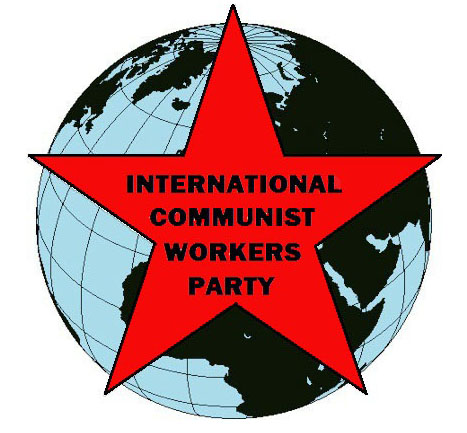
 |
FIGHT FOR COMMUNISM! |
International Communist Workers Party | |

The Ebola epidemic has caused many to question long-held assumptions about capitalist medical care. The massive struggles after the Chinese revolution give us a glimpse of what communist healthcare could accomplish.
However, the Chinese Communist Party had socialism, not communism, as its immediate goal. Socialism is incompatible with mobilizing the masses for communist health care. During the Cultural Revolution of the 1960s, health was a battleground between communist and capitalist ideas and practices. We have much to learn from this.
When the Chinese Communist Party took power in 1949, masses were suffering and dying from starvation and preventable and treatable diseases like syphilis, typhoid, and dysentery.
The government quickly began developing the tiny western-style medical establishment that existed for the wealthy urban elite. It built new hospitals and medical schools, and trained thousands of doctors and nurses to serve urban workers, professionals and cadres.
Party members in the countryside (where 80% of the population lived) did not wait for this bourgeois medical system to trickle down to rural workers. They mobilized the masses to wipe out the diseases that had plagued them for centuries.
The elimination of schistosomiasis is a prime example. This terrible disease, transmitted by a snail-borne parasite, devastated entire villages. The Party mobilized millions to systematically drain waterways and exterminate the snails. When the snails were gone, so was schistosomiasis.
"To mobilize the masses does not mean to issue them shovels [to dig up and kill the snails] and instructions; it means to fire them up with enthusiasm, to release their initiative and tap their wisdom," explained the British communist surgeon Joshua Horn, who worked in China from 1954-1969.
But the Party did not mobilize the masses for communism, then or ever.
Meanwhile the Chinese bourgeois medical establishment continued to grow. In its capitalist-style institutions, work was divided into a hierarchy of strictly defined jobs. Only doctors and nurses had any medical training. Doctors earned more than nurses, administrators more than cleaners.
The wage system and capitalist division of labor undermined attempts to act on communist ideals. Political meetings were held where all participated as equals. But then everyone went back to their assigned duties and collected their unequal paychecks. Administrators were supposed to do manual labor one day a week but according to Horn they usually weaseled out of this.
Barefoot Doctors and the Cultural Revolution
In 1965, Party members strongly committed to communism started the "barefoot doctors" campaign to bring medical care to the countryside.
Barefoot doctors were nothing like bourgeois doctors. They came from the rural working class and never left it. They did farmwork at least half the year.
They started with only few months training, concentrated on basic anatomy and the most common diseases and conditions. What they lacked in training they made up for in devotion to the working class. Furthermore, they rapidly gained experience and every winter received more training.
But they never earned the same "work points" as formally-trained physicians. Again, socialism revealed itself as a form of capitalism that thwarted communist health care.
More than a million became barefoot doctors, and some reached the skill level of formally-trained doctors, for example performing operations. However, the defeat of the Cultural Revolution ended this process.
Barefoot doctors were officially abolished in 1981. The healthcare system in the countryside collapsed.
Healthy Principles
We can derive some principles of communist healthcare from the Chinese experience.
(1) Mobilize the masses for communist revolution. Abolish money and wage labor. Without communist social relations of production, communist health care can't survive.
(2) Mobilize the masses for prevention. The Chinese experience shows that even people without medical knowledge can make big contributions to prevention. That's how they wiped out major diseases and brought healthcare to the countryside. Prevention includes the nutritious food, clean water, and sewage systems that could have prevented the Ebola epidemic in west Africa.
(3) Bring medical knowledge to the masses. A big part of the campaigns against disease was public education--speeches, rallies, marches, films, street theater. Barefoot doctors brought medical knowledge--at higher level--to masses of people.
(4) Abolish the division between "mental" and "manual" labor in healthcare. Socialist China never questioned this model explicitly. Implicitly the barefoot doctor program questioned it, but it never got far enough to replace it.
(5) Health providers should work alongside their fellow workers in the factories, mills, fields, etc. to maintain their dedication to the working class, instead of working full-time in health care.
Not a Temporary Tactic, But Superior Healthcare
Conservative Chinese socialist leaders embraced aspects of these principles as a temporary, emergency tactic required because they lacked other resources.
Those with a more communist outlook, like Horn, saw something different. The barefoot doctor approach "hold[s] the key to future advances," he declared. Millions came to similar conclusions, particularly during the Cultural Revolution.
Their struggle calls on us to take their work to a higher level. Mobilizing the masses for communism--before during and after the revolution, in every aspect of society--is our guiding principle.
Read more in Peking Review 1964-1972; Joshua Horn, Away With All Pests, and William Hinton, Shenfan.